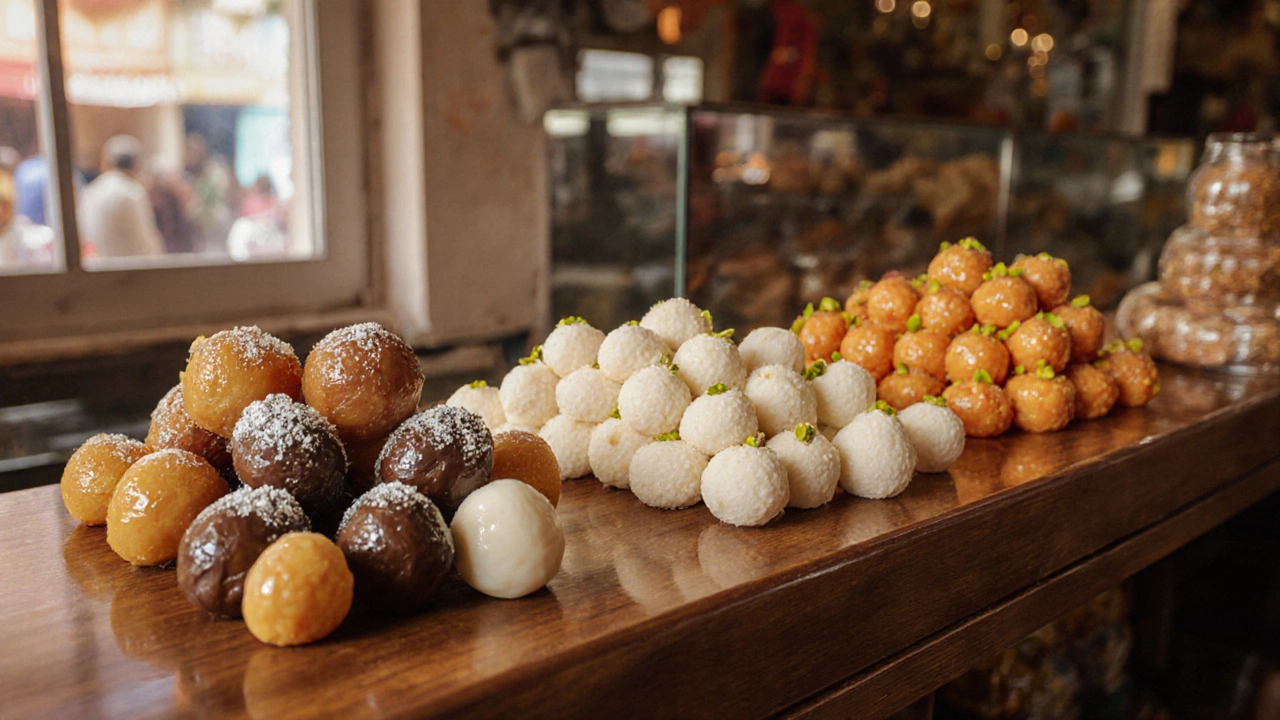Vegan Mithai Guide: Which Indian Sweets Are Plant‑Based?
Discover which Indian mithai are vegan, learn how to spot non‑vegan ingredients, and get easy swaps to make classic sweets plant‑based.
When working with dairy‑free mithai, traditional Indian confectionery crafted without any dairy ingredients. Also known as vegan mithai, it lets you enjoy classic flavors while keeping recipes suitable for lactose‑intolerant or plant‑based diets. This tag pulls together recipes, tips, and science that help you swap milk, ghee, and paneer for alternatives like coconut milk, almond butter, or soy‑based sweeteners. Below you’ll find a mix of articles that touch on the chemistry of sweets, dairy‑free candy hacks, and cultural twists on beloved desserts.
One of the biggest influences on dairy‑free mithai is Indian sweets, the broad family of desserts ranging from laddus to barfis. Also known as mithai, they traditionally rely on ghee and milk solids for richness. When you replace those with dairy alternatives, such as coconut cream, oat milk, or nut‑based pastes, you keep the texture buttery while staying plant‑based. This connection means that mastering dairy‑free mithai often requires learning the behavior of plant fats, just like you would when making vegan desserts from any cuisine.
Key to any successful dairy‑free mithai is understanding three core elements: the sweetener, the fat source, and the binding agent. Sugar or jaggery provides the classic sweetness, but many recipes also incorporate maple syrup or agave to add moisture. Coconut oil or refined sunflower oil mimics ghee’s melt‑in‑your‑mouth feel, while powdered milk substitutes (like soy or almond) act as a dry binder. Knowing that dairy‑free mithai includes plant‑based sweeteners and requires dairy alternatives for texture helps you troubleshoot common issues like grainy texture or crumbling bars.
Start with a reliable dairy‑free milk substitute. Full‑fat coconut milk adds a subtle tropical note that pairs well with cardamom or saffron. For a neutral taste, try oat cream—it whips up nicely and stays stable when cooled. Next, pick a fat that solidifies at room temperature; coconut butter works great for firm ladoos, while almond butter gives a softer bite for barfis. Finally, a small amount of cornstarch or arrowroot powder can replace the thickening power of milk solids in traditional recipes.
Beyond ingredients, a few kitchen tools make the process smoother. A heavy‑bottomed saucepan ensures even heat distribution, preventing scorching of sugar syrups. Silicone molds give clean release, especially when working with nut‑based doughs that can stick. And a digital thermometer helps you hit the right candy‑making stages—soft‑ball (115‑120 °C) for chewy laddus or hard‑ball (121‑130 °C) for crunchy barfis.
Now that you’ve got the basics, the articles below walk you through specific challenges and creative twists. From using cream of tartar to improve fudge‑like textures in mithai to swapping traditional candy ingredients for vegan versions, you’ll find practical, step‑by‑step guidance. Dive in and start crafting sweets that respect both tradition and dietary needs.

Discover which Indian mithai are vegan, learn how to spot non‑vegan ingredients, and get easy swaps to make classic sweets plant‑based.